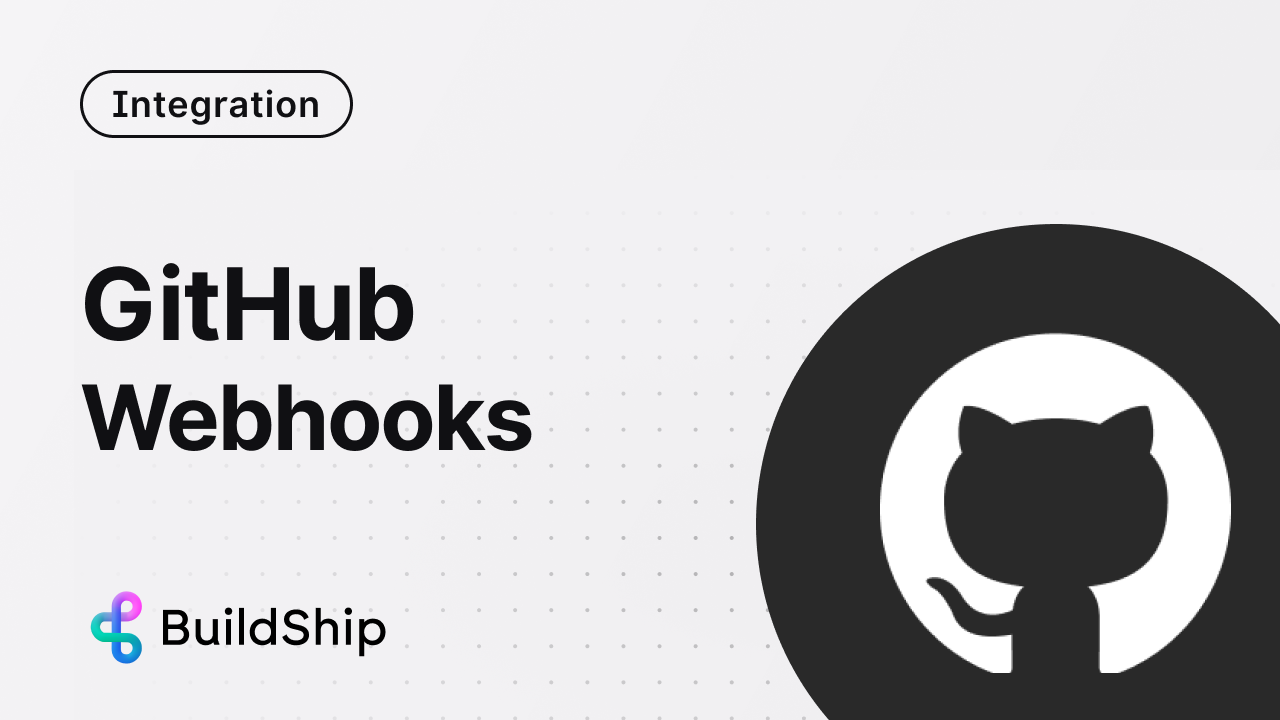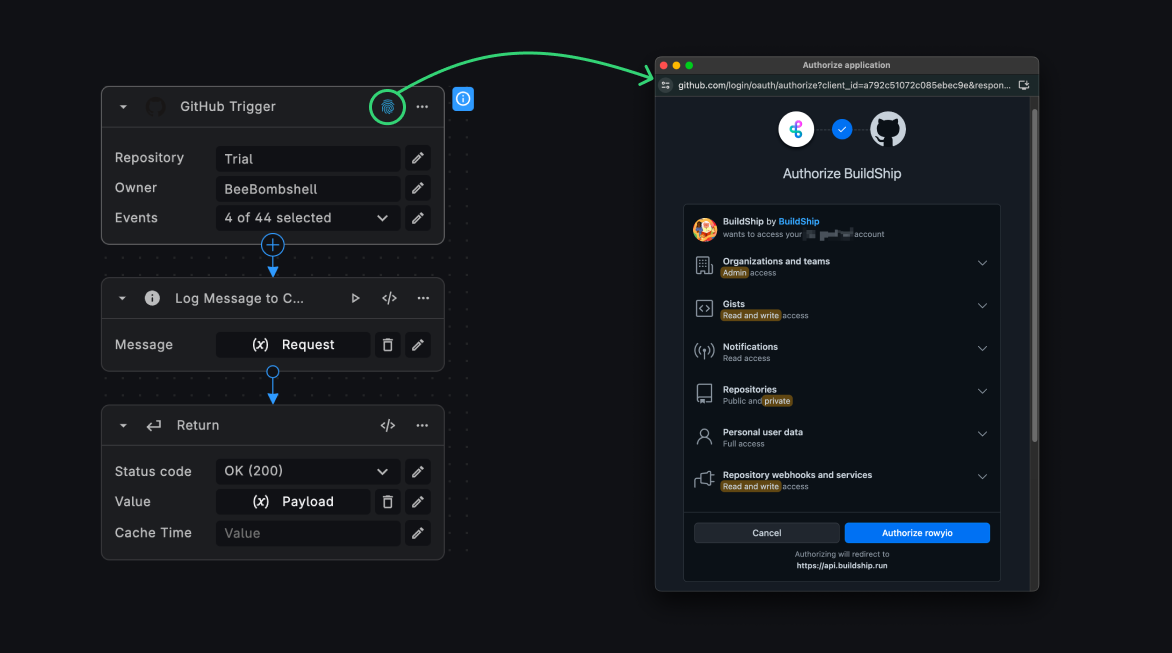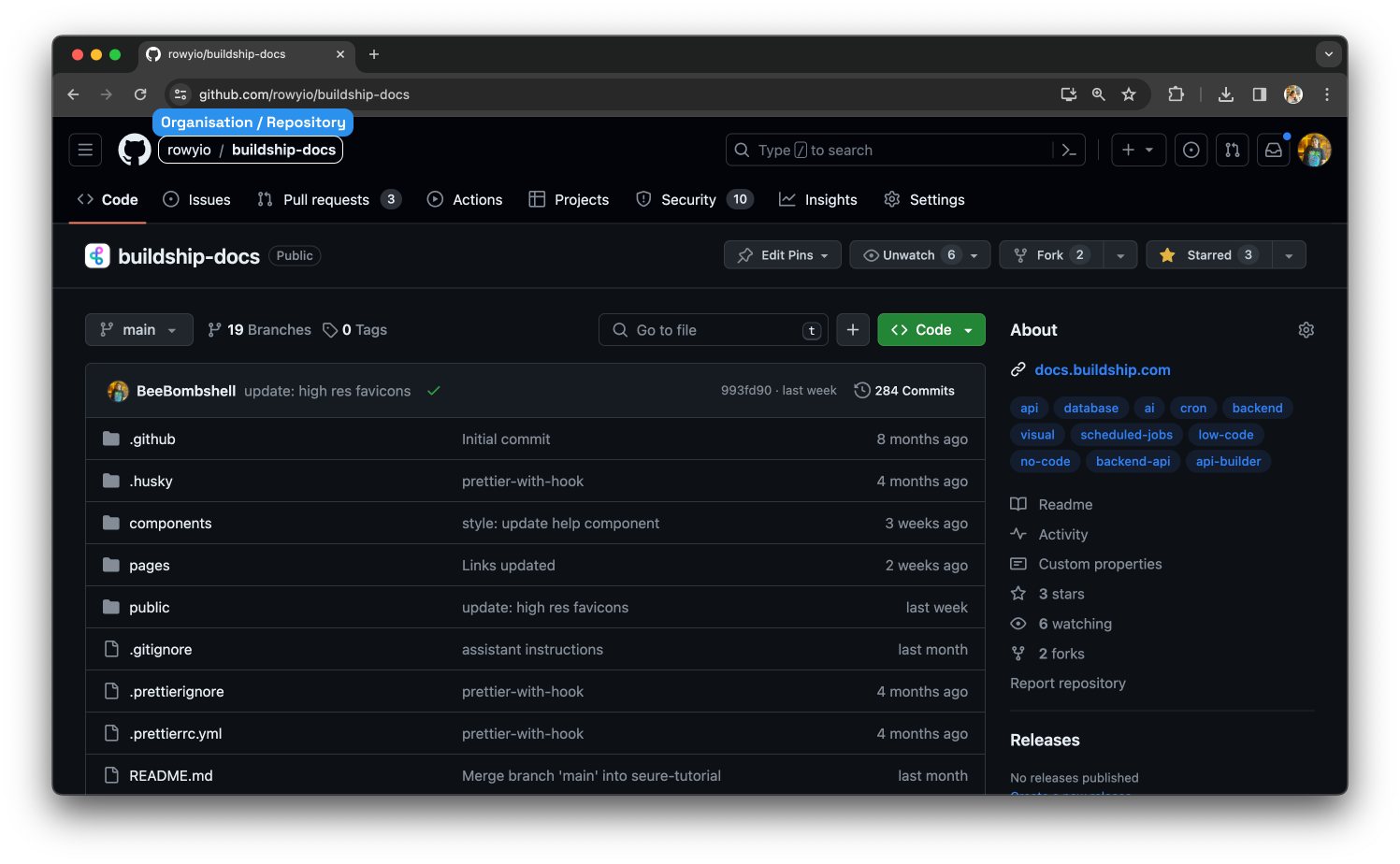GitHub Trigger
The GitHub Trigger is a powerful tool that allows you to create a webhook on a GitHub repository, enabling you to execute a BuildShip workflow whenever specific events occur in the repository. This integration seamlessly connects your GitHub projects with BuildShip, unlocking a world of automation possibilities.

Authentication
The GitHub Trigger leverages OAuth for authentication, providing a secure and user-friendly experience. Users are prompted to grant the necessary permissions to BuildShip during the configuration process, eliminating the need to share sensitive API keys.
To authenticate, users simply click on the fingerprint icon, which redirects them to the GitHub login page. After granting the necessary permissions, the red fingerprint icon will turn green, indicating successful authentication.

Input Configuration

Repository
The GitHub Repository for which you want to set up the webhook. Ensure that you have the required permissions to create a webhook for the selected repository.
Owner
The owner (user or organization) of the repository for which you want to set up the webhook.
Events
The list of events that will trigger the associated BuildShip workflow. You can choose from a wide range of over 40 events, including:
push: Triggered when code is pushed to the repository.issues: Triggered when issues are opened, closed, or updated.pull_request: Triggered when pull requests are opened, closed, or updated.release: Triggered when a new release is published.fork: Triggered when the repository is forked.- And many more!
For a comprehensive list of available events, their descriptions, and the expected payload, refer to the GitHub Webhook Events and Payloads documentation (opens in a new tab).
Use Cases
The GitHub Trigger opens up a world of possibilities for automating various tasks and processes related to your GitHub projects. Here are some interesting use cases:
-
Continuous Integration and Deployment (CI/CD): Trigger a BuildShip workflow to build, test, and deploy your application whenever code is pushed to a specific branch or when a pull request is merged.
-
Issue and Pull Request Management: Automate tasks like assigning labels, adding comments, or moving issues to a project board based on specific events related to issues and pull requests.
-
Release Management: Trigger a workflow to create and publish release notes, update documentation, or notify relevant stakeholders when a new release is published.
-
Repository Monitoring: Set up workflows to monitor repository activity, such as forks, stars, or branch protection changes, and take appropriate actions based on the events.
-
Collaboration and Notifications: Integrate with various communication channels (e.g., Slack, Microsoft Teams) to receive notifications or updates about repository events, facilitating better collaboration among team members.
Need Help?
- 💬Join BuildShip Community
An active and large community of no-code / low-code builders. Ask questions, share feedback, showcase your project and connect with other BuildShip enthusiasts.
- 🙋Hire a BuildShip Expert
Need personalized help to build your product fast? Browse and hire from a range of independent freelancers, agencies and builders - all well versed with BuildShip.
- 🛟Send a Support Request
Got a specific question on your workflows / project or want to report a bug? Send a us a request using the "Support" button directly from your BuildShip Dashboard.
- ⭐️Feature Request
Something missing in BuildShip for you? Share on the #FeatureRequest channel on Discord. Also browse and cast your votes on other feature requests.